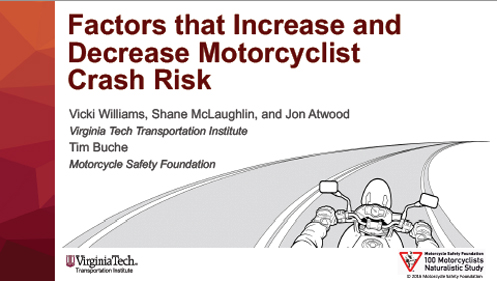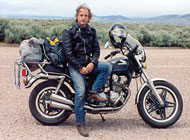Report Out On ‘Naturalistic’ Study Of Motorcycle Crashes
About six years ago I wrote quite a lot about a new motorcycle crash study that was being conducted by the University of Oklahoma. It was to be an update to the old Hurt Report of 1981. The Motorcycle Safety Foundation (MSF) was to chip in to cover the cost.
Then things got a little crazy. The MSF announced it would not help fund the study, but instead would fund its own “naturalistic” study of factors contributing to motorcycle crashes. Later on, Dr. Samir Ahmed, the researcher heading up the Oklahoma study, left the group and had some harsh words for it all. Honestly, I lost track and don’t even know if a report was ever issued.
But now the MSF has completed its study and it recently issued its findings. I’ll do a quick recap here and then follow up in more detail in follow-up posts.
The difference between the two types of studies are that the one looks at police reports and interviews those involved after a crash occurs. The “naturalistic” study equipped 100 motorcycles with a considerable array of cameras and other sensors and tracked riders at all times. The thinking, of course, was that at least some of these riders would experience “incidents” along the way. Then the data collected by the sensors could be studied to develop a deep understanding of what happened, which in turn would make it possible to devise methods for avoidance of such events in the future. And as a purveyor of a motorcycle rider training curriculum, the MSF would presumably revise its curriculum and work these new findings into its training.
A number of the tracked riders did indeed crash, although most of the crashes appear to be been cases of dropping the bike in a parking lot. I say that with some caution, however, because the wording used is not totally clear and that is my interpretation.
The 100 riders covered more than 366,000 miles during the course of the study. There were 78 male and 22 female riders, ages 21 to 79. Bikes included 41 cruisers, 38 touring bikes, and 21 sport bikes. Participants live in California, Virginia, Arizona, and Florida. The study ran over the course of one year.
Altogether, there were 30 crashes and 122 near-crashes, summed up under the term of “crashes and near-crashes” and abbreviated as CNC.
Beyond the 17 incidents of “ground impact – low speed,” which I presume to be dropping the bike, there were 3 incidents where the rider ran off the road, 3 where another vehicle turned in front of them, 2 where the rider rear-ended someone, 1 crash at speed, 1 poor curve negotiation, 1 rider who was rear-ended, and two I’m not sure I understand, but 1 “other vehicle straight crossing path” and 1 “subject vehicle turn into path (same direction).”
Enough for now. I’ll get into the details next time.
Biker Quote for Today
A motorcycle is really a miniature automobile with full sized noise, smell and dirt output.
Tags: Motorcycle Safety Foundation, naturalistic motorcycle study

